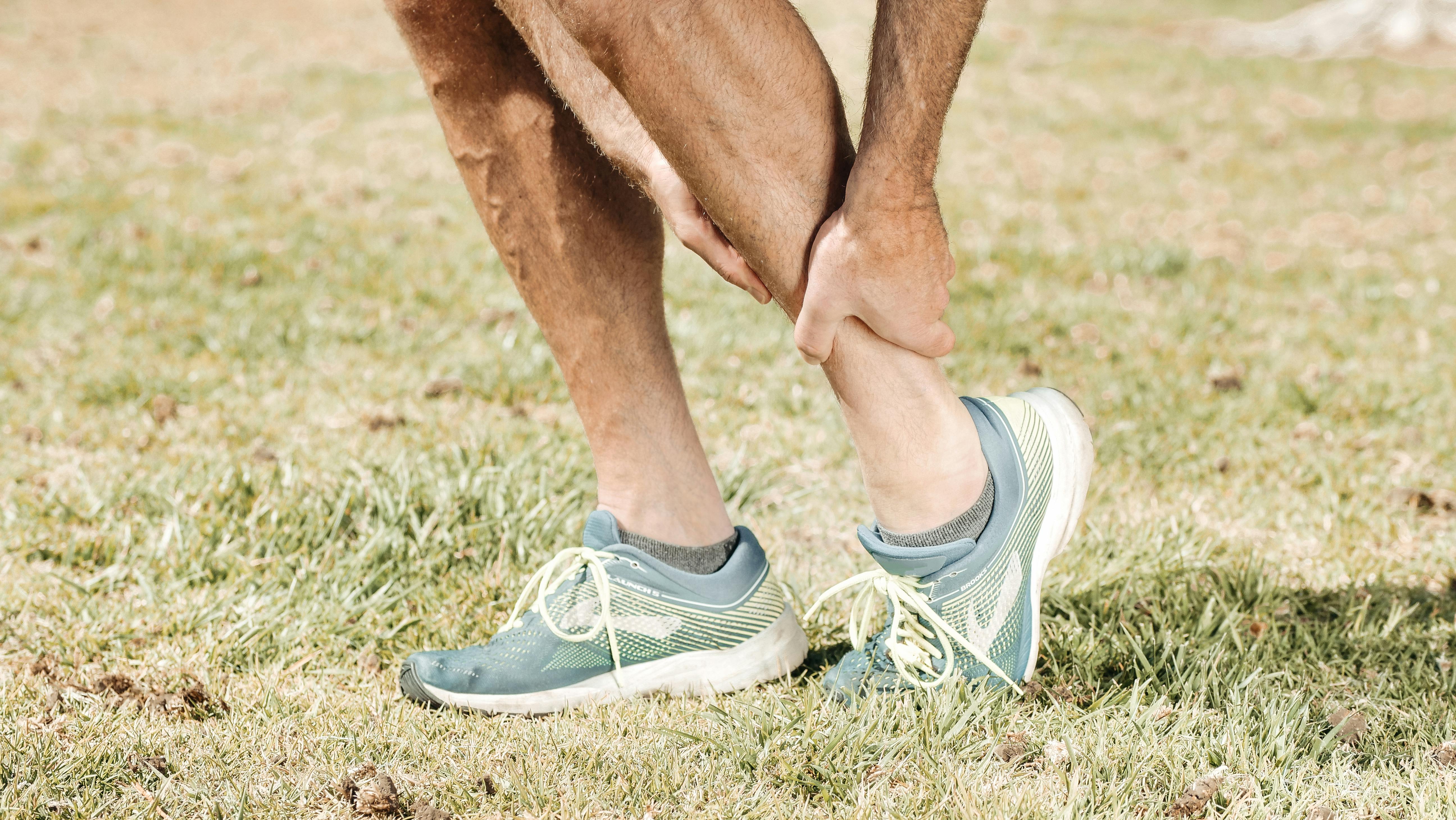Introduction to the Walk-Run Method

So, you've heard about the magic of running, the runner's high, the feeling of accomplishment as you cross a finish line, or maybe you're just looking for a fantastic way to boost your fitness. Perhaps you've even dipped your toes into the world of running with a Couch-to-5K program. That’s amazing! You’ve taken the first step on an incredible journey. But what comes after? Many runners find themselves at a crossroads after completing a basic program. Do you just keep running 5Ks? Or do you aim for something bigger, something more challenging? That's where perfecting the Walk-Run Method comes into play, offering a powerful and versatile approach to take your running further than you ever thought possible.
What is the Walk-Run Method?

At its heart, the Walk-Run Method is brilliantly simple yet incredibly effective. It’s about strategically alternating periods of running with periods of walking. It's not about giving up when you get tired; it's about planning walk breaks proactively to manage fatigue and sustain your effort over longer distances and durations. This method isn't new; in fact, it's been a staple in the running world for decades, championed by running legends like Jeff Galloway. Galloway, an Olympian and running coach, popularized the method, especially for marathon training, emphasizing its ability to reduce injury risk and improve overall enjoyment of running.
The beauty of the Walk-Run Method lies in its adaptability. It’s not a rigid, one-size-fits-all prescription. Instead, it’s a flexible framework that can be tailored to runners of all levels, from absolute beginners just starting their running journey to seasoned marathoners looking to optimize their race strategy. For beginners, it's a gentle and encouraging way to ease into running, making it feel less daunting and more achievable. For experienced runners, it can be a strategic tool to manage fatigue during long runs or races, allowing them to maintain a stronger pace for longer periods and recover more efficiently.
The core idea is to break down your run into manageable segments. Instead of trying to run continuously until exhaustion sets in, you plan walk breaks from the start. These walk breaks aren't a sign of weakness or failure; they are a planned part of your strategy. They allow your heart rate to recover slightly, your muscles to get a brief respite, and your mental focus to reset. This, in turn, enables you to run further and often faster overall than you might if you tried to run non-stop.
Why Move Beyond Couch-to-5K?

Couch-to-5K programs are fantastic starting points. They’re designed to get you off the couch and running a 5-kilometer distance, typically in about 8-12 weeks. They successfully introduce the Walk-Run Method in its most basic form, often starting with very short running intervals and gradually increasing them. However, once you've conquered the 5K, you might find yourself wanting more. Perhaps you're aiming for a 10K, a half marathon, or even the ultimate challenge – a full marathon. Or maybe you simply want to run faster, longer, and feel stronger in your regular runs.
Sticking solely to a basic 5K program, or just repeating 5K runs, can lead to a plateau in your fitness progress. Your body adapts quickly, and to continue improving, you need to introduce new challenges and variations into your training. Perfecting the Walk-Run Method is the perfect next step because it allows you to progressively increase your running volume, intensity, and endurance in a structured and sustainable way. It's about taking the foundational principles you learned in Couch-to-5K and expanding upon them to reach new running heights.
Moving beyond Couch-to-5K and refining your Walk-Run Method opens up a world of possibilities. You can start exploring longer distances, setting new personal records, and experiencing the incredible sense of accomplishment that comes with pushing your boundaries. It’s about evolving from simply being able to run a 5K to becoming a more versatile, resilient, and strategic runner. This guide is your roadmap to making that transition, to perfecting the Walk-Run Method, and to unlocking your full running potential, no matter where you are on your running journey right now.
Benefits of the Walk-Run Method

Why should you embrace the Walk-Run Method beyond just getting started? Because it's not just for beginners! This approach offers a wealth of benefits for runners at every level, helping you run further, faster, and healthier. Let's explore the key advantages that make the Walk-Run Method a game-changer for your running journey.
Enhanced Endurance and Stamina
One of the most significant benefits of the Walk-Run Method is its remarkable ability to build endurance and stamina. Think of your energy during a run like a battery. If you sprint off the starting line and try to maintain a fast pace continuously, you’re likely to drain your battery quickly. You'll hit a wall, fatigue will set in, and you might have to stop sooner than you planned. The Walk-Run Method, however, is like pacing your energy expenditure strategically. The walking intervals act as mini-recharge stations throughout your run.
During the running segments, you're challenging your cardiovascular system, strengthening your muscles, and improving your aerobic capacity. Then, when you transition to walking, you're not completely stopping; you're actively recovering while still moving forward. These walk breaks allow your heart rate to come down slightly, giving your cardiovascular system a chance to catch its breath. Your muscles get a moment to recover, reducing the build-up of lactic acid, which is a major contributor to muscle fatigue and that heavy-legged feeling.
By incorporating these planned walk breaks, you can sustain a higher overall intensity for a longer duration. You're essentially distributing your effort more evenly across the entire run. This is particularly crucial for longer distances. Imagine training for a half marathon or a marathon. Trying to run the entire distance without any breaks, especially in training, can be incredibly taxing and increase the risk of burnout or injury. The Walk-Run Method allows you to accumulate more training mileage comfortably and consistently, gradually building the endurance needed to tackle those longer races.
For beginners, this means you can run for longer periods sooner than you might think. Instead of being discouraged by early fatigue, you can keep moving forward, building confidence and a positive association with running. For more experienced runners, it means you can push your long runs further, experiment with faster paces during your running intervals, and recover more effectively between workouts, ultimately leading to greater endurance gains over time.
Reduced Risk of Injury

Running injuries are a common frustration for runners of all levels. Overtraining, pushing too hard too soon, and neglecting recovery are often major culprits. The Walk-Run Method is a powerful tool in your injury prevention arsenal because it inherently builds in periods of reduced impact and stress on your body. Running is a high-impact activity, and while our bodies are remarkably adaptable, they need time to adjust to the repetitive stress. Continuous running, especially when starting out or increasing mileage rapidly, can place excessive strain on your joints, muscles, tendons, and ligaments, leading to overuse injuries like runner's knee, shin splints, and stress fractures.
The walk breaks in the Walk-Run Method act as crucial moments of respite. During walking, the impact forces on your body are significantly lower compared to running. This reduced impact gives your weight-bearing joints – ankles, knees, and hips – a break from the pounding. It also allows your muscles, particularly those in your legs and feet, to recover momentarily before you resume running. This cyclical pattern of run-walk-recover helps to distribute the stress more evenly, preventing any single part of your body from being overloaded.
Furthermore, the Walk-Run Method can help you maintain better running form for longer. When fatigue sets in during continuous running, form often deteriorates. You might start slouching, overstriding, or shuffling your feet, all of which can increase your risk of injury. The walk breaks help to combat fatigue, allowing you to maintain better posture and a more efficient stride during your running segments. Good running form is not only more efficient but also reduces stress on your joints and muscles.
For runners who are returning from injury, or those who are injury-prone, the Walk-Run Method is an especially valuable approach. It allows you to gradually reintroduce running into your routine without overwhelming your body. You can carefully control the running-to-walking ratio, starting with more walking and gradually increasing the running intervals as your body adapts and strengthens. This controlled progression is key to building resilience and staying healthy in the long run.
Mental and Physical Benefits

Beyond the tangible benefits of improved endurance and reduced injury risk, the Walk-Run Method offers a fantastic boost to both your mental and physical well-being. Running, in general, is known for its mood-boosting and stress-relieving effects, and the Walk-Run Method enhances these benefits by making running feel more accessible and enjoyable, especially for those who might find continuous running intimidating or overwhelming.
Mentally, the Walk-Run Method can be incredibly empowering. For beginners, the idea of running continuously for 30 minutes or more might seem daunting. The Walk-Run approach breaks down that challenge into smaller, more manageable chunks. Knowing that you have planned walk breaks ahead can make the running segments feel less intimidating and more achievable. As you successfully complete each run interval and then enjoy the walk break, you build a sense of accomplishment and momentum. This positive reinforcement cycle can significantly boost your confidence and motivation to keep going.
The mental breaks provided by the walking intervals are also valuable. They give you a chance to refocus, adjust your pacing, and mentally prepare for the next running segment. It’s a chance to take in your surroundings, listen to your body, and simply enjoy the process of being active outdoors. This can make your runs feel less like a grueling workout and more like an enjoyable and mindful experience.
Physically, in addition to the cardiovascular and muscular benefits of running itself, the Walk-Run Method promotes a more balanced and sustainable approach to fitness. It encourages consistency, which is key to long-term health improvements. Because it reduces the risk of injury and burnout, you're more likely to stick with your running routine consistently over time. Regular physical activity, like running, has a multitude of physical health benefits, including improved cardiovascular health, weight management, stronger bones and muscles, and a reduced risk of chronic diseases. The Walk-Run Method makes these benefits more accessible to a wider range of people, regardless of their current fitness level or running experience.
Ultimately, the Walk-Run Method is about making running a positive and sustainable part of your life. It's about enjoying the process, feeling good both during and after your runs, and reaping the wide-ranging mental and physical rewards that come with regular exercise. It’s not just about reaching a specific distance or pace; it's about cultivating a healthy and happy relationship with running that you can maintain for years to come.
Perfecting Your Walk-Run Method

Now that you understand the incredible benefits of the Walk-Run Method, let's dive into how to perfect it and make it work optimally for you. It's not just about randomly alternating walking and running; it's about finding the right balance, progressing intelligently, and incorporating key supporting elements into your training. Here’s your guide to fine-tuning your Walk-Run approach.
Finding Your Pace

One of the keys to perfecting the Walk-Run Method is finding your ideal pace and rhythm. This isn't about speed in the traditional sense; it's about discovering the right balance between your running intervals and your walking intervals that allows you to sustain your effort comfortably and effectively. The goal is to find a pace that feels challenging but sustainable, where you're pushing yourself during the running segments but recovering adequately during the walking breaks.
Start by experimenting with different run-walk ratios. A common starting point for beginners is to run for a set period, like 1 minute, and then walk for 1 minute (often written as 1:1). You can adjust this ratio based on your fitness level and how you feel. If 1:1 feels too easy, try increasing the running interval to 2 minutes or even 3 minutes, keeping the walk interval at 1 minute initially (2:1 or 3:1). Conversely, if 1:1 feels too challenging, you can start with shorter running intervals, like 30 seconds run and 1 minute walk (0.5:1), or even longer walk breaks.
Pay close attention to your body as you experiment. During the running intervals, you should be breathing a bit heavier than normal, but you should still be able to hold a broken conversation. This is often referred to as conversational pace. If you're gasping for air and unable to speak, you're likely running too fast. The walking intervals should be brisk and purposeful, not a leisurely stroll. Think of them as active recovery, keeping your body moving and your blood flowing but at a lower intensity.
Tools and apps can be incredibly helpful in tracking and optimizing your pace. GPS running watches and smartphone apps like Strava, Runkeeper, and Nike Run Club allow you to track your pace, distance, and time in real-time. Many of these apps also have interval timer features that can audibly cue you when to switch between running and walking. This eliminates the need to constantly look at your watch and helps you maintain a consistent rhythm. Experiment with different paces during your runs and use the data from these tools to see how different run-walk ratios affect your overall performance and fatigue levels.
Don't be afraid to adjust your pace and ratios as needed. Some days you might feel stronger and can handle longer running intervals or faster paces. Other days, you might feel more fatigued and need to shorten your running intervals or slow down. Listening to your body is crucial. The Walk-Run Method is all about flexibility and adapting to your body's needs on any given day. Over time, as you become more experienced and fitter, you'll naturally find your optimal pace and rhythm, allowing you to maximize the benefits of the Walk-Run Method.
Incremental Progression

Once you've found a comfortable starting pace and run-walk ratio, the next step in perfecting the Walk-Run Method is to focus on incremental progression. This is about gradually and safely increasing the running intervals over time while still incorporating walk breaks. The key word here is "gradually." Avoid the temptation to jump ahead too quickly, as this can increase your risk of injury and burnout. Consistency and sustainable progress are far more important than rapid gains.
A common approach to incremental progression is to increase the running interval by a small amount each week or every few weeks, depending on your progress and how your body is adapting. For example, if you started with a 1:1 run-walk ratio, you might progress to 1.5 minutes of running and 1 minute of walking in the following week, then 2 minutes of running and 1 minute of walking the week after that, and so on. You could also gradually decrease the walking interval while keeping the running interval the same, or a combination of both.
Listen to your body carefully throughout this progression. Pay attention to how you feel during and after your runs. Are you recovering well between workouts? Are you experiencing any new aches or pains that persist? If you're feeling consistently fatigued or noticing signs of overuse, it's a signal to slow down your progression or even take a step back temporarily. It's perfectly okay to repeat a week or two at the same run-walk ratio if you feel your body needs more time to adapt.
Another important aspect of incremental progression is to vary your workouts. Don't just do the same run-walk routine every time. Incorporate different types of runs into your week, such as:
- Easy Runs: These should make up the majority of your runs. They are done at a conversational pace, and the run-walk ratio should feel comfortable and sustainable.
- Long Runs: Gradually increase the overall distance of one run per week. You might maintain the same run-walk ratio but simply extend the total duration.
- Interval Runs: Once you've built a solid base, you can introduce shorter, faster running intervals with walk breaks in between. For example, you could do 400-meter repeats at a faster pace with walk recoveries.
- Hill Runs: Incorporate hills into some of your runs to build strength and power. You might need to adjust your run-walk ratio on hilly terrain, opting for more walking uphill and running on the downhill and flat sections.
By progressively increasing your running intervals, varying your workouts, and consistently listening to your body, you'll gradually build your running fitness and endurance while minimizing the risk of injury. Remember that progression is not always linear. There will be ups and downs, good days and bad days. The key is to be patient, persistent, and adaptable, and to celebrate your progress along the way, no matter how small it may seem.
Incorporating Strength and Flexibility Training

To truly perfect your Walk-Run Method and become a well-rounded, resilient runner, it's essential to incorporate strength and flexibility training into your routine. Running primarily works your legs and cardiovascular system, but neglecting other aspects of fitness can lead to imbalances, weaknesses, and increased injury risk. Strength training strengthens the muscles that support running, improves power and efficiency, and helps prevent injuries. Flexibility training enhances range of motion, reduces muscle stiffness, and also contributes to injury prevention.
For strength training, focus on exercises that target key running muscles, including:
- Legs: Squats, lunges, step-ups, calf raises. These exercises strengthen your quads, hamstrings, glutes, and calves, which are crucial for running power and stability.
- Core: Planks, bridges, Russian twists, bicycle crunches. A strong core is essential for maintaining good running form, stability, and efficient power transfer.
- Hips and Glutes: Glute bridges, clamshells, hip abductions, single-leg deadlifts. Strong hips and glutes are vital for running propulsion, stability, and injury prevention, particularly in the knees and hips.
Aim to incorporate strength training 2-3 times per week. You can do bodyweight exercises, use resistance bands, or lift weights at a gym. Start with exercises that you can perform with good form and gradually increase the intensity or resistance as you get stronger. Focus on proper technique over lifting heavy weights, especially when you're new to strength training.
Flexibility training is equally important. Regular stretching improves muscle elasticity, reduces stiffness, and enhances your range of motion, all of which contribute to more efficient and comfortable running and a lower risk of injury. Focus on stretches that target the muscles commonly used in running, such as:
- Calf stretches: Gastrocnemius and soleus stretches.
- Hamstring stretches: Seated hamstring stretch, standing hamstring stretch.
- Quadriceps stretches: Standing quad stretch, lying quad stretch.
- Hip flexor stretches: Lunge stretch, kneeling hip flexor stretch.
- Glute stretches: Figure-four stretch, pigeon pose.
Make stretching a part of your routine after every run or strength training session, when your muscles are warm and more pliable. Hold each stretch for 20-30 seconds and focus on relaxing into the stretch, avoiding bouncing or forcing it. In addition to static stretching, consider incorporating dynamic stretching and mobility exercises into your warm-ups before your runs. Dynamic stretches involve movement, such as leg swings, arm circles, and torso twists, which prepare your muscles and joints for running.
By combining the Walk-Run Method with consistent strength and flexibility training, you're creating a holistic training approach that not only builds your running endurance but also makes you stronger, more flexible, and more resilient to injuries. This comprehensive approach is the key to truly perfecting your Walk-Run Method and enjoying a long and healthy running journey.
Advanced Techniques and Tips

Once you've mastered the basics of the Walk-Run Method and built a solid running foundation, it's time to explore advanced techniques and tips to further optimize your training and performance. These strategies are designed to help you push your boundaries, tackle new challenges, and get even more out of your Walk-Run approach. Let's delve into customizing your plan, leveraging technology, and refining your nutrition and hydration strategies.
Customizing Your Training Plan
The beauty of the Walk-Run Method is its inherent flexibility, and as you progress, you can and should customize your training plan to align with your specific goals, fitness level, and the types of races or distances you're aiming for. Generic training plans can be a good starting point, but tailoring your plan to your individual needs is where you'll see the most significant gains. Consider these customization strategies:
Adapting for Longer Distances: If you're training for a half marathon or marathon, you'll need to gradually increase your long run distance. The Walk-Run Method is perfectly suited for long distance training. You can maintain a consistent run-walk ratio throughout your long runs, focusing on increasing the overall duration. As you get closer to race day, you might experiment with longer running intervals and shorter walk breaks to simulate race conditions. However, even for marathoners, walk breaks can be a strategic part of race day, especially in the later miles to manage fatigue and prevent hitting the wall.
Training for Different Terrains: If your races or training routes involve varied terrain, incorporate hill training and trail running into your plan. On hilly routes, you might naturally adjust your run-walk ratio, walking uphill and running on flat and downhill sections. Trail running often requires more walking, especially on technical or steep sections. Embrace the walk breaks on trails as part of the adventure and a way to navigate challenging terrain safely and efficiently.
Tailoring to Personal Goals: Are you aiming to improve your speed, increase your distance, or simply enjoy running for fitness and health? Your goals will influence your training plan customization. If speed is your focus, incorporate interval training and tempo runs into your Walk-Run routine. Intervals involve short bursts of fast running with walk or jog recoveries, while tempo runs are sustained periods of comfortably hard running with walk warm-ups and cool-downs. If distance is your primary goal, prioritize long runs and gradually increase your weekly mileage, maintaining a comfortable run-walk ratio. If you're running for general fitness, focus on consistency and enjoyment, varying your routes and workouts to keep things interesting and engaging.
Considering Your Fitness Level: Your current fitness level should always guide your training plan. Beginners should start with shorter running intervals and longer walk breaks, gradually progressing as fitness improves. More experienced runners can start with longer running intervals and incorporate more challenging workouts sooner in their training cycle. If you're returning from injury or taking a break from running, start conservatively and gradually rebuild your fitness base using the Walk-Run Method.
Listening to Your Body: Ultimately, the best customization is listening to your body. Pay attention to how you feel during and after your runs, adjust your plan based on your energy levels, sleep quality, stress levels, and any signs of fatigue or pain. Flexibility is key. Don't be afraid to modify your plan on the fly if you need an extra rest day, a shorter run, or a change in your run-walk ratio. Your body is the best guide to optimizing your Walk-Run Method for your unique needs and circumstances.
Utilizing Technology

In today's world, technology offers incredible tools to enhance your Walk-Run training and track your progress. From GPS watches to smartphone apps and online platforms, technology can provide valuable data, motivation, and guidance. Here’s how to effectively utilize technology to elevate your Walk-Run Method:
GPS Running Watches: These watches are specifically designed for runners and offer a wealth of features. They accurately track your pace, distance, time, heart rate, cadence (steps per minute), and more. Many models have built-in interval timers that can beep or vibrate to cue you when to switch between running and walking intervals. Advanced watches offer features like route mapping, performance analytics, and even music playback. Investing in a good GPS running watch can provide valuable insights into your training and help you stay on track with your Walk-Run plan.
Smartphone Running Apps: If you prefer running with your phone, numerous running apps offer similar functionality to GPS watches, often at a lower cost. Apps like Strava, Runkeeper, Nike Run Club, and MapMyRun track your runs, provide real-time feedback, and often include interval training features. Many apps also offer social features, allowing you to connect with friends, join challenges, and share your runs. Some apps even offer personalized coaching plans that adapt to your progress and goals.
Heart Rate Monitors: Monitoring your heart rate can provide valuable insights into your training intensity and recovery. Heart rate monitors can be chest straps or wrist-based sensors that pair with your watch or phone. Tracking your heart rate during your runs can help you ensure you're running at the right intensity during your running intervals and recovering adequately during your walk breaks. Heart rate zones can guide your training, helping you target specific physiological adaptations, such as building aerobic base or improving lactate threshold.
Online Training Platforms and Communities: Websites and online platforms like TrainingPeaks, Final Surge, and Garmin Connect offer tools to plan, track, and analyze your training. These platforms often allow you to create customized training plans, log your workouts, and visualize your progress over time. Online running communities and forums can provide support, motivation, and a place to share your experiences and ask questions. Connecting with other runners, whether online or in person, can enhance your motivation and enjoyment of running.
Motivation and Entertainment Apps: Beyond performance tracking, technology can also help with motivation and entertainment. Music streaming apps like Spotify and Apple Music can provide a soundtrack for your runs. Podcast apps offer hours of listening content to keep your mind engaged during longer runs. Gamified running apps can make training more fun and engaging, particularly for beginners or those who find running monotonous. Experiment with different technologies to find what works best for you and keeps you motivated and consistent with your Walk-Run training.
Nutrition and Hydration for Runners

No discussion of perfecting your Walk-Run Method is complete without addressing the crucial roles of nutrition and hydration. Fueling your body properly and staying adequately hydrated are essential for optimal performance, recovery, and overall health. Whether you're running short distances or training for a marathon, paying attention to your nutrition and hydration is paramount. Here are key tips for runners:
Balanced Diet: Focus on a balanced diet rich in whole foods. Include plenty of carbohydrates for energy, lean protein for muscle repair and recovery, and healthy fats for overall health and hormone function. Carbohydrates are your primary fuel source for running, so ensure you're consuming adequate amounts of complex carbohydrates like whole grains, fruits, and vegetables. Protein is essential for muscle recovery and rebuilding, so include sources like chicken, fish, beans, lentils, and tofu in your diet. Healthy fats, found in avocados, nuts, seeds, and olive oil, are important for hormone production and overall health.
Pre-Run Fueling: What you eat before your runs can significantly impact your energy levels and performance. For shorter runs (under 60 minutes), you may not need to eat anything beforehand if you're well-fueled from previous meals. For longer runs, consume a light, easily digestible carbohydrate-rich snack about 1-2 hours before your run. Examples include a banana, toast with jam, or a small bowl of oatmeal. Avoid heavy, high-fat, or high-fiber foods before running, as they can cause digestive discomfort.
During-Run Fueling (for longer runs): For runs longer than 90 minutes, you'll likely need to replenish your energy stores during the run. Carry energy gels, chews, or sports drinks to provide easily digestible carbohydrates. Aim to consume about 30-60 grams of carbohydrates per hour of running, starting around 45-60 minutes into your run. Practice your race day fueling strategy during your long training runs to ensure your stomach can tolerate it.
Post-Run Recovery Nutrition: Replenishing your energy stores and aiding muscle recovery after your runs is crucial. Within 30-60 minutes after your run, consume a combination of carbohydrates and protein. This can be a recovery drink, a protein smoothie, or a balanced meal. Carbohydrates will replenish your glycogen stores, while protein will help repair and rebuild muscle tissue.
Hydration: Staying adequately hydrated is essential for performance, health, and preventing dehydration-related issues. Drink water consistently throughout the day, not just around your runs. For runs under 60 minutes, water is usually sufficient. For longer runs or runs in hot weather, consider sports drinks that contain electrolytes (sodium, potassium) to replace those lost through sweat. Carry water or a sports drink with you on longer runs, or plan routes that have water fountains or stores where you can refill. Learn to recognize the signs of dehydration, such as fatigue, headache, dizziness, and dark urine, and take steps to rehydrate promptly.
Listen to Your Body: Nutrition and hydration are highly individual. Experiment to find what works best for you. Pay attention to how different foods and hydration strategies affect your energy levels, digestion, and performance. Adjust your nutrition and hydration plan based on your individual needs, preferences, and the demands of your training. Consult with a registered dietitian or sports nutritionist for personalized guidance if needed.
Overcoming Common Challenges

Even with the best training plans and techniques, runners inevitably face challenges along the way. Staying motivated over the long term and dealing with setbacks like injuries or plateaus are common experiences. Knowing how to navigate these challenges is crucial for maintaining consistency and enjoying a fulfilling running journey. Let's explore strategies for overcoming these common hurdles.
Staying Motivated
Motivation is not a constant; it ebbs and flows. There will be days when you feel energized and excited to run, and days when getting out the door feels like a monumental effort. Sustaining motivation over weeks, months, and years requires proactive strategies. Here are effective ways to stay motivated in your Walk-Run journey:
Set Realistic and Achievable Goals: Goal setting is a powerful motivator, but it's crucial to set goals that are both challenging and attainable. Start with smaller, short-term goals that you can achieve relatively quickly, such as completing a certain number of runs per week, increasing your long run distance by a mile, or running a 5K race. As you achieve these smaller goals, set progressively larger, longer-term goals, like running a 10K, half marathon, or improving your 5K time. Celebrate your accomplishments along the way, no matter how small they seem. Breaking down a large goal into smaller milestones makes the journey feel less overwhelming and provides regular boosts of motivation.
Find a Running Buddy or Group: Running with others can significantly enhance motivation and enjoyment. Find a friend, family member, or join a local running group. Having someone to run with provides accountability, social support, and makes runs more fun. You can encourage each other on tough days, share training tips, and celebrate successes together. Running groups often organize group runs, races, and social events, creating a sense of community and belonging.
Vary Your Routes and Workouts: Running the same route day after day can become monotonous and demotivating. Explore new running routes in your neighborhood, parks, or trails. Vary your workouts by incorporating different types of runs, such as interval training, hill repeats, tempo runs, and fartleks (speed play). Try running at different times of day or in different weather conditions (when safe and appropriate). Variety keeps things interesting, challenges your body in different ways, and prevents mental burnout.
Track Your Progress: Tracking your runs and progress can be incredibly motivating. Use a running log, app, or spreadsheet to record your runs, distances, paces, and how you felt. Review your progress regularly to see how far you've come. Visualizing your improvements in distance, pace, or consistency can be a powerful reminder of your hard work and dedication. Tracking also helps you identify patterns, adjust your training plan, and stay accountable to your goals.
Reward Yourself (Healthily): Acknowledge and reward yourself for achieving milestones and sticking to your training plan. Rewards don't have to be extravagant; they can be simple things that you enjoy, such as buying new running gear, treating yourself to a massage, taking a relaxing bath, or spending time on a hobby you love. Healthy rewards reinforce positive habits and make the running journey more enjoyable. Avoid using food as a reward, as this can undermine your health and fitness goals.
Remember Your "Why": When motivation wanes, remind yourself of your reasons for starting to run in the first place. Was it to improve your health, lose weight, reduce stress, achieve a race goal, or simply enjoy being outdoors? Reconnect with your initial motivations and reflect on the positive changes running has brought to your life. Writing down your "why" and revisiting it when you need a boost can help you stay focused and committed.
Dealing with Setbacks

Setbacks are an inevitable part of any running journey. Injuries, illnesses, and plateaus in progress can be frustrating and demotivating. However, how you respond to setbacks is crucial. View them not as failures but as temporary obstacles and opportunities to learn and grow. Here's how to deal with setbacks effectively:
Injuries: Running injuries are common, especially when starting out or increasing mileage too quickly. If you experience pain that persists or worsens with running, stop running and seek professional advice from a doctor, physical therapist, or sports medicine specialist. Early diagnosis and treatment are key to faster recovery. While recovering from an injury, focus on cross-training activities that don't aggravate your injury, such as swimming, cycling, or elliptical training, to maintain your fitness. Be patient with your recovery and gradually reintroduce running when cleared by your healthcare provider. Follow a structured return-to-running plan to minimize the risk of re-injury.
Illnesses: Getting sick is another common setback that can disrupt your training. If you come down with a cold, flu, or other illness, prioritize rest and recovery. Don't try to push through illness; it can prolong your recovery and weaken your immune system. Take time off from running until you feel better and have recovered fully. When you resume running, start with shorter, easier runs and gradually increase your mileage and intensity. Listen to your body and don't rush back into your previous training volume too quickly.
Plateaus in Progress: It's normal to experience plateaus in your running progress, where you feel like you're no longer improving your pace, distance, or fitness. Plateaus can be demotivating, but they're often a sign that your body has adapted to your current training routine. To break through a plateau, try varying your training. Introduce new types of workouts, such as interval training, hill repeats, or strength training. Increase your mileage gradually, but don't overdo it. Ensure you're getting adequate rest and recovery. Sometimes, a plateau can be overcome simply by taking a short break from structured training and focusing on enjoyable, easy runs for a week or two.
Embrace Rest and Recovery: Rest and recovery are not setbacks; they are essential components of training. Adequate rest allows your body to repair and rebuild muscle tissue, replenish energy stores, and adapt to the stress of running. Include rest days in your training schedule and prioritize sleep. Listen to your body and take extra rest days when needed. Don't view rest as laziness or a sign of weakness; it's a crucial part of becoming a stronger, more resilient runner. Overtraining and neglecting recovery are common causes of setbacks, including injuries and burnout.
Learn from Setbacks: Every setback, whether it's an injury, illness, or plateau, is an opportunity to learn and grow. Reflect on what might have contributed to the setback. Were you pushing too hard too soon? Were you neglecting rest or recovery? Were you ignoring early warning signs of pain or fatigue? Use setbacks as valuable lessons to improve your training habits, injury prevention strategies, and overall approach to running. Setbacks are temporary, but the knowledge and resilience you gain from overcoming them can make you a stronger and more informed runner in the long run.
Conclusion

Congratulations! You've now journeyed through the comprehensive guide to perfecting the Walk-Run Method, moving beyond the basics of Couch-to-5K and unlocking a world of running possibilities. From understanding the core principles and benefits to mastering advanced techniques and overcoming common challenges, you're equipped with the knowledge and strategies to take your running to the next level.
Embrace the Journey
Remember that running is not just about the destination; it's about the entire journey. Embrace the process of training, the ups and downs, the challenges and triumphs. Celebrate every milestone, no matter how small it may seem. Every run, every walk break, every strength training session, every healthy meal, is a step forward on your path to becoming a stronger, healthier, and more confident runner. The Walk-Run Method is not a quick fix; it's a sustainable approach to building a lifelong love of running and achieving your long-term fitness goals.
Be patient with yourself and your progress. Running is a journey of continuous improvement, and there will be days when you feel stronger and faster, and days when you feel more fatigued or face setbacks. Listen to your body, adjust your training as needed, and remember that consistency is key. The more consistently you apply the principles of the Walk-Run Method, the more benefits you'll reap over time. Enjoy the process of getting fitter, stronger, and more resilient with each run.
The Walk-Run Method is a powerful tool for runners at every level, from beginners to experienced marathoners. It's a testament to the fact that running doesn't have to be about continuous pounding and pushing yourself to the limit every time you lace up your shoes. It's about running smarter, training strategically, and enjoying the process of becoming the best runner you can be. So, lace up those shoes, get out there, and embrace the journey of perfecting your Walk-Run Method. The road ahead is filled with exciting challenges, rewarding accomplishments, and the joy of running well.
Next Steps

Now that you've absorbed the knowledge in this guide, it's time to put it into action. Here are your next steps:
- Download this guide as a PDF for offline access and easy reference.
- Review the key principles and techniques of the Walk-Run Method.
- Set realistic and achievable running goals that align with your current fitness level and aspirations.
- Create a customized Walk-Run training plan based on your goals, fitness level, and preferences.
- Incorporate strength and flexibility training into your routine 2-3 times per week.
- Utilize technology like GPS watches and running apps to track your progress and stay motivated.
- Refine your nutrition and hydration strategies to fuel your runs and optimize recovery.
- Join a running community or find a running buddy for support and motivation.
- Start running and experimenting with different Walk-Run ratios and paces.
- Listen to your body, adjust your plan as needed, and celebrate your progress!
For further reading and resources, explore books and articles on the Walk-Run Method by Jeff Galloway and other running experts. Consider joining online running forums and communities to connect with other runners and share your experiences. Remember that your running journey is unique to you, and the Walk-Run Method is a versatile tool that you can adapt and refine to suit your individual needs and goals. Enjoy the process, stay consistent, and get ready to experience the incredible benefits of perfected Walk-Run running!
